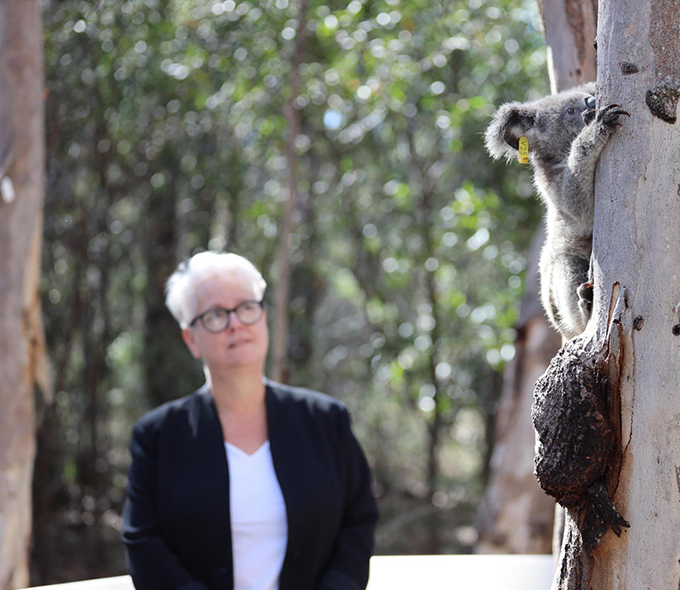There is no threat from 1080 baiting to Australian native animal populations, including carnivorous marsupials such as the spotted-tailed quoll (pictured). A 2008 study found that it is 100 times more likely to find spotted-tailed quolls in areas with long-term aerial and ground baiting for wild dogs and foxes. PHOTO: CraigRJD
Aerial spring baiting campaigns are about to get under way across key locations across the country, aimed at reducing the impact of wild dogs on livestock and thereby supporting the livelihoods and emotional wellbeing of farmers and their families. However, an additional benefit is that the control programs also help conservation efforts for endangered native wildlife. 1080 remains the most target specific and environmentally safe toxin available.
Woolgrowers primarily undertake wild dog and fox baiting programs to minimise attacks on their flocks. It can be very effective when land managers use it as part of strategic, broadscale, coordinated control programs supported by other control methods such as trapping, fencing, shooting and guardian animals.
However, as well as reducing attacks on livestock, these control programs also have a positive environmental impact, reducing predation on Australia’s native animal species.
When it comes to food, wild dogs are not fussy diners, they prey on 229 native animals including mammals, birds and reptiles of all sizes from insects to water buffalo. However, they prefer to eat small and medium-sized mammals when available, including native animals.
As a generalist predator, wild dogs can severely impact rare and threatened species under certain conditions. Wild dogs have been directly implicated in the rapid decline of some of Australia’s most iconic species including 14 native mammals, reptiles and birds listed under the national Environment Protection and Biodiversity Conservation Act 1999.
In addition to direct predation, wild dogs carry hydatid worms (Echinococcus granulosis), a zoonotic disease (transmittable to humans) that has severe implications for native species, particularly macropods such as the rare Bridled Nail-tail wallaby thought to be extinct for most of the 20th century.
“Woolgrowers and other landholders undertaking wild dog and fox control programs can be rightly proud that they are not only protecting their flocks, their businesses and the wellbeing of their families and local communities, but that they are also helping native wildlife to survive and thrive,” said AWI Program Manager Vertebrate Pests, Ian Evans.
“This is an additional way that the Australian wool industry can demonstrate its eco-credentials to the broader community and public and maintain its social licence.”
1080 is an environmentally responsible control
- 1080 is a natural toxin found in many native Australian plants.
- 1080 is highly target specific to wild dogs and foxes at regulated dose rates.
- 1080 is biodegradable.
Sodium fluoroacetate (1080) is the major control tool used to manage the impacts of wild dogs and foxes on Australia’s livestock industry. It is an environmentally responsible option for invasive species control due to its minimal impact on native animals.
1080 is a naturally occurring toxin found in more than 30 species of native Australian plants. Many of Australia’s native fauna have a natural tolerance to 1080 because they have shared the landscape with plants containing 1080 for many thousands of years, unlike introduced species such as wild dogs and foxes which are much more sensitive to the poison. The small amount required to target wild dogs and foxes poses a minimal risk to non-target species.
There have been many scientific studies which have considered the risks of 1080 poison on native wildlife populations, including 29 species of native birds, seven species of native reptiles and amphibians and 44 species of native mammals (including carnivorous marsupials such as the spotted-tailed quoll). All these studies have found that there is no threat from 1080 poison to populations of these wildlife species.
The dosage used for wild dog and fox control is very low and therefore target specific. For example, a lace monitor (also known as a goanna) would have to ingest more than 71 wild dog meats baits in one sitting to ingest enough 1080 to kill it.
Another reason why 1080 is environmentally responsible is because it biodegrades quickly and is broken-down into harmless compounds by microorganisms and bacteria when exposed to soil and water, leaving no residual or harmful chemicals in the landscape.
1080 is approved for use in Australia through the Australian Pesticides and Veterinary Medicine Authority. All Australian states and territories endorse 1080 baiting as part of an integrated approach to pest animal management. 1080 is a restricted (S7) chemical product and can only be used and purchased by professionals; state and territory regulations manage the use and availability of 1080 baits to lower the risks to non-target species.
Answers to common questions about wild dogs and 1080 baiting are available on the PestSmart Website.








